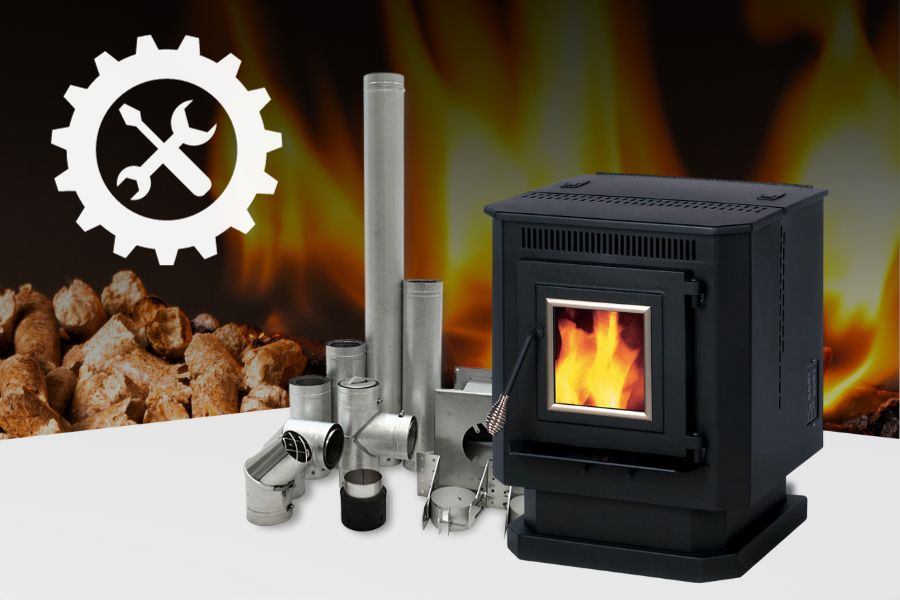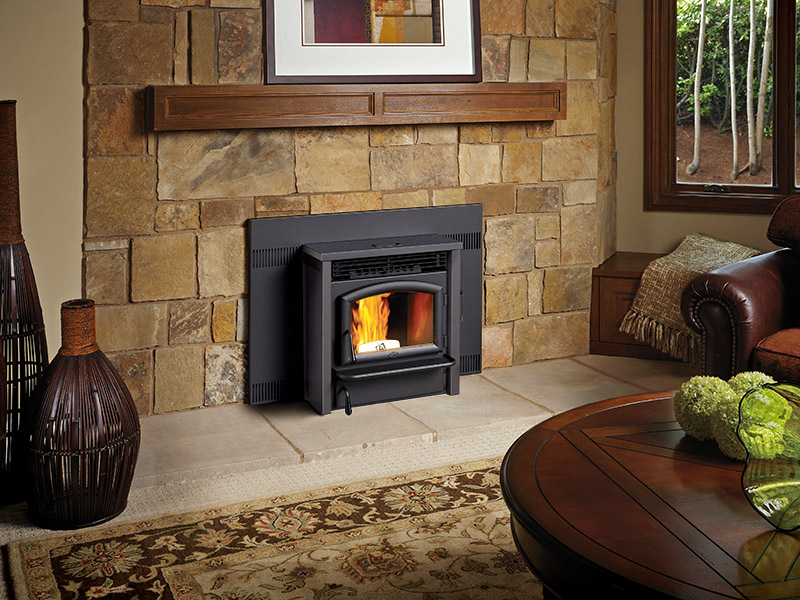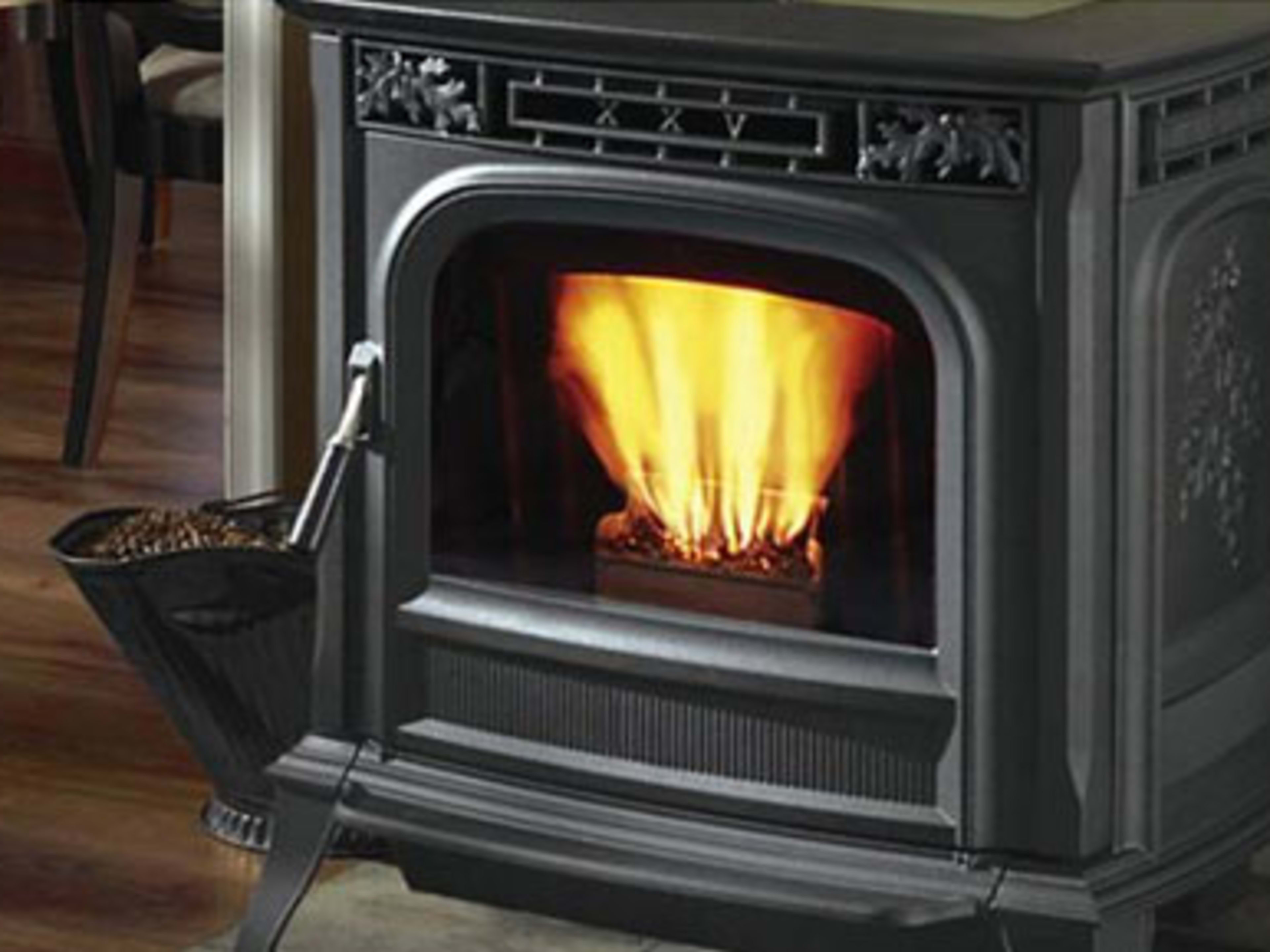Can You Replace A Wood Stove With A Pellet Stove

The allure of a crackling wood stove, the comforting warmth it provides – it's undeniable. But as times change and technology advances, many homeowners are considering alternatives. One popular option is the pellet stove. So, can you replace a wood stove with a pellet stove? The short answer is yes, but the long answer involves weighing the pros and cons, understanding the technical requirements, and considering your individual needs and circumstances.
Pellet Stoves vs. Wood Stoves: A Head-to-Head Comparison
Before diving into the replacement process, let's compare pellet and wood stoves across several key factors:
Fuel Source and Efficiency
Wood Stoves: Utilize seasoned firewood as fuel. Efficiency varies significantly depending on the stove model, the dryness of the wood, and the user's burning techniques. Older wood stoves can have AFUE (Annual Fuel Utilization Efficiency) ratings as low as 40%, while newer, EPA-certified models can reach 70-80%. However, real-world efficiency often falls short of these numbers.
Pellet Stoves: Burn compressed wood pellets, typically made from recycled wood waste. Pellet stoves boast higher and more consistent efficiency ratings, often ranging from 75% to over 90%. This is due to the uniform fuel source and automated feeding systems that regulate the burn rate for optimal combustion. Some models even have automatic ignition and thermostatic controls for precise temperature management.
Environmental Impact
Wood Stoves: Can contribute to air pollution due to the release of particulate matter (smoke) during combustion. Older models are particularly problematic. Modern, EPA-certified wood stoves burn cleaner but still produce some emissions. The sourcing of firewood is also a factor; sustainably harvested wood is more environmentally friendly.
Pellet Stoves: Generally considered more environmentally friendly than wood stoves. The pellets are made from a renewable resource (wood waste), and the combustion process produces significantly less particulate matter. However, the manufacturing and transportation of pellets do have an environmental footprint.
Convenience and Maintenance
Wood Stoves: Require significant manual labor, including cutting, splitting, stacking, and drying firewood. Loading the stove, controlling the burn rate, and removing ashes are also manual tasks. Maintenance involves regular chimney sweeping to prevent creosote buildup, a fire hazard.
Pellet Stoves: Offer greater convenience. Pellets are purchased in bags and stored easily. The stove's hopper is filled with pellets, and the automated feeding system takes care of the rest. Thermostatic controls maintain a consistent temperature. Ash removal is less frequent than with wood stoves. However, pellet stoves require electricity to operate the auger and fan, and they need periodic cleaning of the burn pot and exhaust vent.
Cost
Wood Stoves: The initial cost of a wood stove can be lower than a pellet stove. However, the long-term cost of firewood can be substantial, depending on your location and the availability of affordable firewood. You may also need to invest in equipment like a chainsaw and wood splitter.
Pellet Stoves: Typically have a higher upfront cost. Pellet fuel costs can fluctuate, but they are generally predictable. Electricity consumption is an additional cost to consider.
Pros and Cons of Replacing a Wood Stove with a Pellet Stove
Pros:
- Increased Efficiency: Lower fuel consumption and heating costs.
- Reduced Emissions: Cleaner burning and less environmental impact.
- Greater Convenience: Automated operation and less manual labor.
- Precise Temperature Control: Thermostatic controls for consistent heating.
- Easier Fuel Storage: Pellets are compact and easy to store.
Cons:
- Higher Upfront Cost: Pellet stoves are generally more expensive to purchase.
- Electricity Dependence: Pellet stoves require electricity to operate.
- Mechanical Components: Potential for mechanical failures and repairs.
- Pellet Availability: Pellet supply and pricing can fluctuate depending on location and demand.
- Noise: The auger and fan can produce some noise.
Factors to Consider Before Replacing Your Wood Stove
Before making the switch, consider these factors:
- Heating Needs: Assess the size and insulation of your home to determine the appropriate BTU (British Thermal Unit) output for your new stove.
- Budget: Factor in the cost of the stove, installation, fuel, and maintenance.
- Local Regulations: Check local building codes and regulations regarding wood and pellet stove installations.
- Fuel Availability: Ensure a reliable supply of wood pellets is available in your area.
- Electrical Requirements: Ensure your home has adequate electrical capacity to power the pellet stove.
- Installation: Consider whether you can install the stove yourself or if you need to hire a professional installer. Proper installation is crucial for safety and efficiency.
Popular Pellet Stove Brands and Models
Several reputable brands offer high-quality pellet stoves. Here are a few popular options:
- Harman: Known for their durable construction, advanced technology, and quiet operation. Models like the Harman P43 are highly regarded for their reliability and efficiency.
- Pelpro: Offers a range of affordable and efficient pellet stoves. The Pelpro PP70 is a popular choice for homeowners seeking a budget-friendly option.
- Enviro: Specializes in stylish and efficient pellet stoves with a focus on environmental responsibility. The Enviro EF5 is a popular model known for its clean-burning performance.
- Quadra-Fire: Offers a variety of pellet stoves with advanced features and exceptional performance. The Quadra-Fire Mt. Vernon AE is a premium model with automatic ash removal and smart home integration.
When comparing models, pay attention to the BTU output, hopper capacity, efficiency rating, and warranty.
Installation Considerations
Replacing a wood stove with a pellet stove involves several installation steps:
- Removal of the Wood Stove: Disconnect the wood stove from the chimney and carefully remove it.
- Chimney Inspection: Inspect the chimney for any damage or obstructions. It may need to be cleaned or relined to meet the requirements of the pellet stove.
- Pellet Vent Installation: Install a 3-inch or 4-inch pellet vent, which is specifically designed for pellet stoves. Pellet vents are different from wood stove chimneys and must be properly sealed and installed according to the manufacturer's instructions.
- Stove Placement: Position the pellet stove in the desired location, ensuring adequate clearance from combustible materials.
- Electrical Connection: Connect the stove to a dedicated electrical circuit.
- Testing: Test the stove to ensure it is functioning properly and safely.
It's highly recommended to hire a qualified HVAC technician or certified pellet stove installer to ensure the installation is done correctly. Improper installation can lead to safety hazards, reduced efficiency, and void warranties.
Warranties and Maintenance
Pellet stoves typically come with a manufacturer's warranty that covers defects in materials and workmanship. Warranty periods vary, but they usually range from 1 to 5 years. Be sure to read the warranty carefully to understand the coverage and any exclusions.
Regular maintenance is essential to keep your pellet stove operating efficiently and safely. This includes:
- Daily: Emptying the burn pot and cleaning the glass.
- Weekly: Cleaning the heat exchanger and checking the air intake.
- Monthly: Inspecting the venting system and cleaning the ash pan.
- Annually: Having the stove professionally inspected and cleaned by a qualified technician.
Making the Decision
Replacing a wood stove with a pellet stove is a significant decision that depends on your individual needs, priorities, and budget. Consider the factors discussed in this article to determine if a pellet stove is the right choice for you.
If you value convenience, efficiency, and environmental friendliness, a pellet stove may be an excellent upgrade. However, if you prefer the traditional ambiance of a wood fire and are willing to put in the extra effort, a modern, EPA-certified wood stove may still be a viable option.
Ultimately, the best heating system is the one that meets your specific needs and provides you with comfortable, reliable, and cost-effective warmth.










